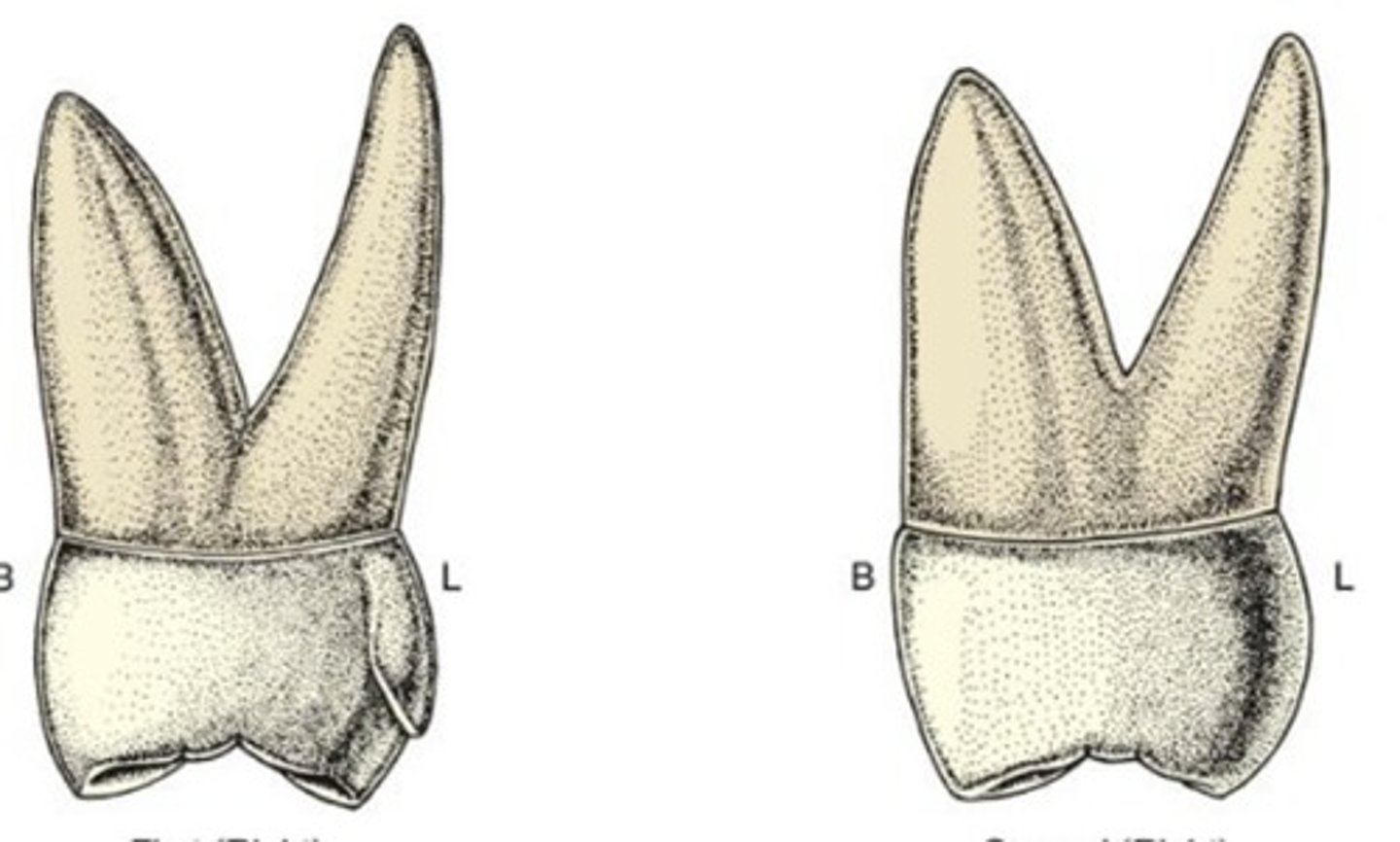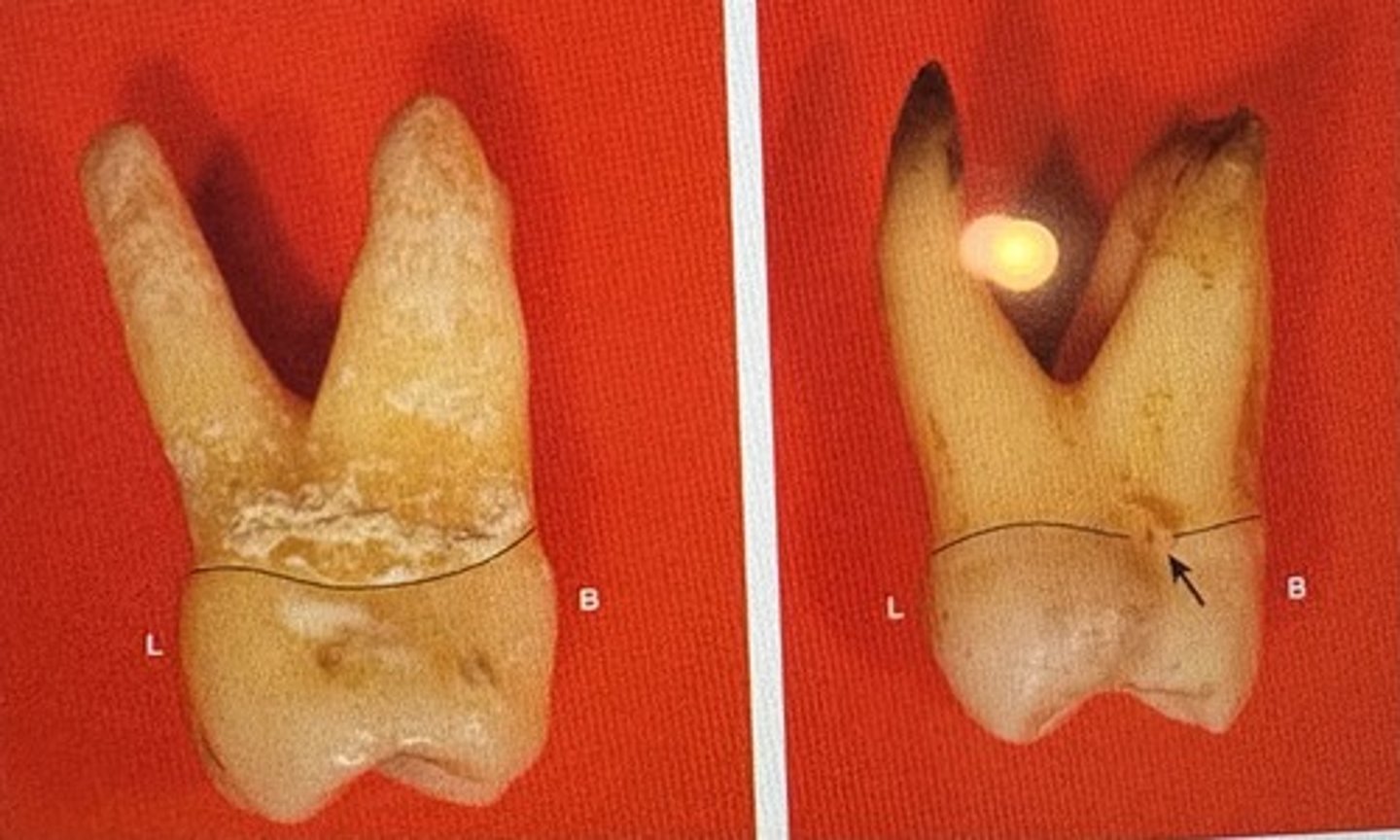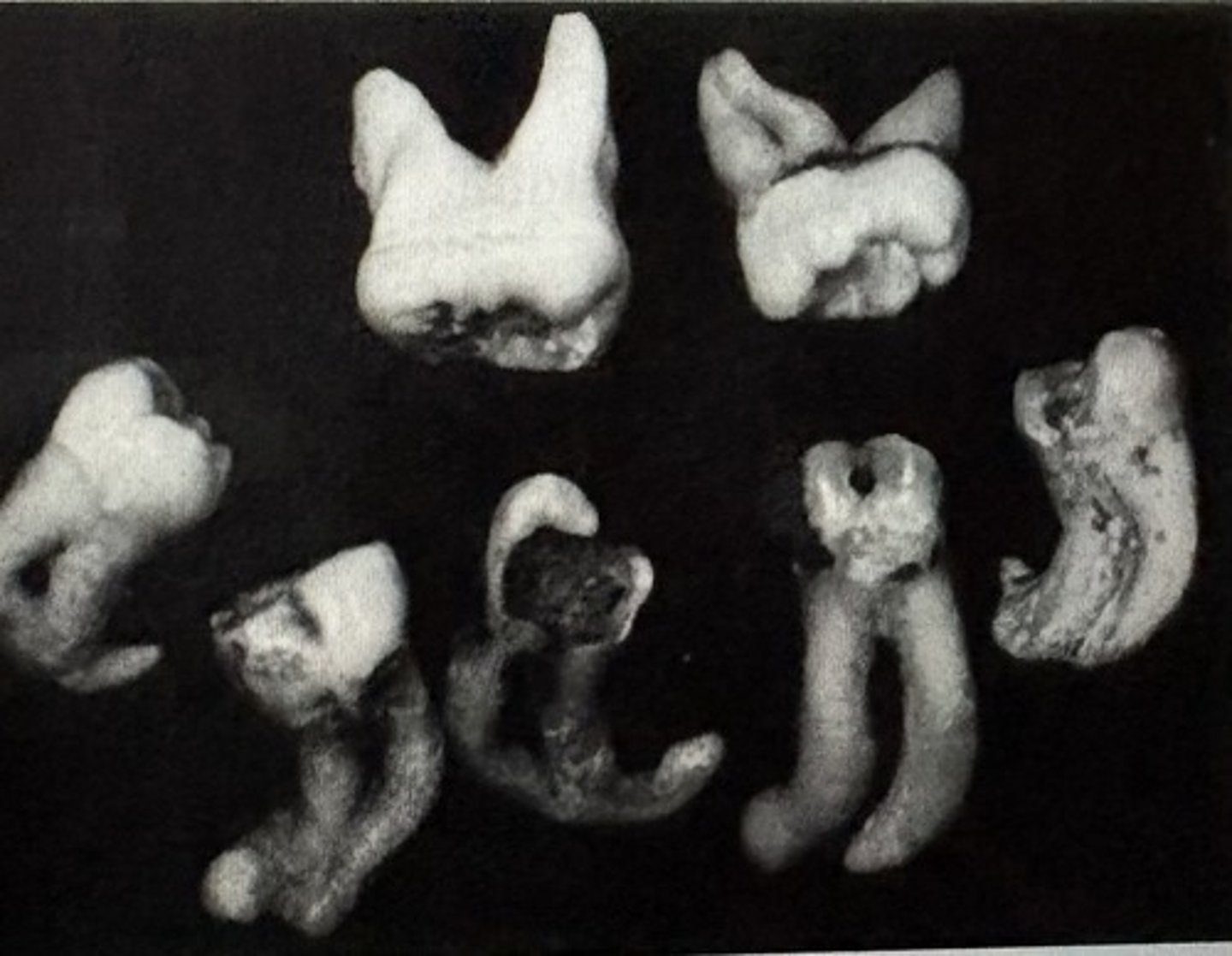Maxillary Permanent Molars
1/36
There's no tags or description
Looks like no tags are added yet.
Name | Mastery | Learn | Test | Matching | Spaced |
|---|
No study sessions yet.
37 Terms
Maxillary molars typically have ____ distinct cusps, what are the variations we see?
4
some have 5 (first molars) and some have 3 (second molars)
(Mesial/distal) cusps of maxillary molars are longer
mesial
Maxillary molars have ____ roots ; name them
3 ; lingual aka palatal, distobuccal and mesiobuccal
Occlusal surfaces of maxillary molars tilt towards the (mesial/distal)
distal
(T/F): The Maxillary molars are wider mesiodistally than buccolingually
False they are wider buccolingually
(T/F): Maxillary molars are wider mesiobucally than occlusocervically
true
Maxillary (first/second) molars have more spread
first - makes the lingual root look more central
Maxillary (first/second) molars have buccal cusps that are more equal in size
first
Maxillary (first/second) molars have a mesiobuccal cusp that is larger than the distobuccal cusp
second
Maxillary (first/second) molars have the cusp of carabelli
first
(T/F): 3-cusp maxillary molars will have a lingual groove
F ; they won't have one
Maxillary (first/second) molars have a greater root flare
first

Maxillary (first/second) molars have root that are in line with the crown
second
(T/F): all three root of maxillary first moles are visible from the mesial view
False ; they are only are three visible form the distal view due to the mesial root being so wide
L is mesial view

Maxillary (first/second) molars have a more equal crown width in the lingual
first
Maxillary (first/second) molars have a nearly square outline
first
Maxillary (first/second) molars have a more narrow lingual crown
second
Maxillary (first/second) molars have a drastically smaller distolingal cusp
second
Maxillary (first/second) molars can sometimes have 3 cusps, leading to a heart shaped molar
second
____% of the population is congenitally missing at least one third molar
20%
Maxillary third molars occlude with ___ teeth
1
Which maxillary molar have the shortest roots and most bulbous crowns?
third molars
Mandibular third molars usually have ____ roots
2 roots, usually fused together
lip like structure that serves as a protective covers for the third molar
operculum
Doctors usually recommended to remove third molars before what age
25
Mandibular molars with extra mesiobuccal cusplet is most common on which molar?
mandibular third molars
- NOT cusp of carabelli
Common in the Prima Native
Americans of Arizona
○ Also seen in those of Indian
descen
What is tuberculum intermedium?
a third lingual cusp on mandibular molars
- common in those of chinese descent
The cusp of carabelli is most commonly seen on what molar?
maxillary first molar - 70.5% of the time
What is dilaceration
severe bending of the roots
c an make endodontic
treatment very challenging
○ Can make extractions more
complicated

whats the deal with maxillary molars cusps
Mesial cusps are taller than distal cusp
which cusp on the maxillary 2nd molar sometimes be missing
distolingual cusp
where are tubercules on maxillary molars?
on marginal ridges, more common on mesial marginal ridges
maxillary 2nd molar crown outline?
twisted parallelogram
maxillary 1st molar crown outline?
square crown outline
how many fossas does 4-cusp maxillary molars have
4
mandibular 3rd molar crown outline?
Somewhat rectangular crown outline
What isnt true about Third molars
■ Softer enamel
■ Crowding of the anterior teeth